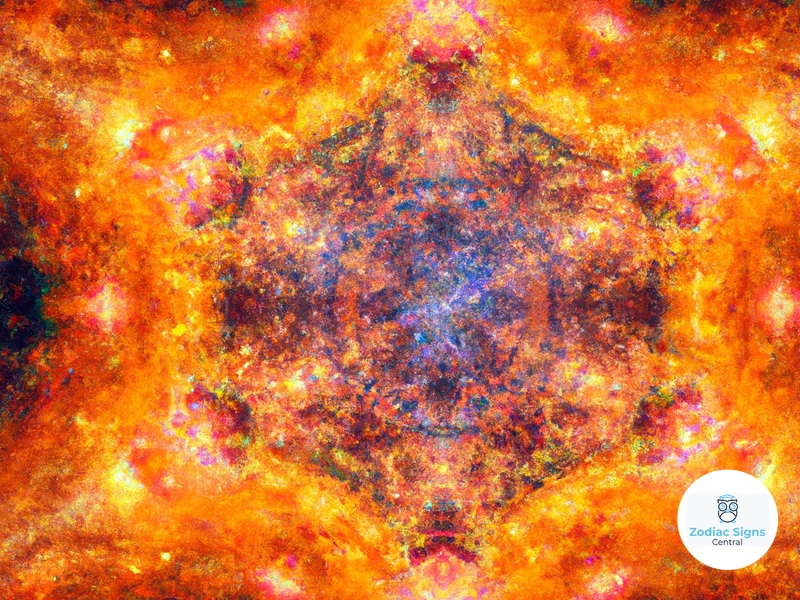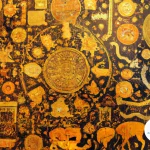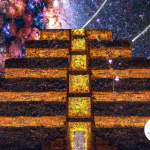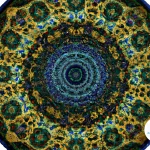Have you ever wondered about the mysterious influence of squares and quincunxes in planetary aspects? These intriguing astrological phenomena have captivated the curiosity of astrologers and enthusiasts alike. In this article, we will delve into the depths of squares and quincunxes, deciphering their meaning, interpreting their effects, and understanding how they shape our lives. Whether you are a seasoned astrologer or a newcomer to the world of astrology, this comprehensive guide will reveal the secrets behind these enigmatic planetary configurations. Join us as we embark on a journey of cosmic exploration and unravel the complexities of squares and quincunxes in the realm of astrology.
What are Squares in Planetary Aspects?

Squares in planetary aspects refer to a specific angle of 90 degrees between two celestial bodies on an astrological chart. They are considered challenging aspects that bring tension, conflict, and obstacles to the areas of life represented by the planets involved. Squares signify cosmic friction, forcing us to confront and resolve issues that arise in our journey of self-development and growth. When two planets are in a square aspect, they create a push-pull effect, urging us to find a balance between their energies.
Table 1: Examples of Square Aspects in Astrology
| Planets | Signs | Effects |
|---|---|---|
| Sun | Moon | Inner conflict between ego and emotions |
| Venus | Mars | Struggles in harmonizing love and desires |
| Jupiter | Saturn | Tensions between expansion and restriction |
When interpreting squares in astrology, it is crucial to evaluate the signs the planets are in and their respective houses. Understanding the specific energies and themes of each planet and sign involved can shed light on the challenges and lessons a square aspect presents in an individual’s life. For instance, a square between the Sun in Aries and the Moon in Cancer may indicate a struggle to balance personal desires (Sun) with emotional needs (Moon).
Definition of Squares
The definition of squares in astrology relates to the aspect formed between two celestial bodies when they are approximately 90 degrees apart. A square aspect represents a dynamic and tense relationship between the planets involved. It creates a sense of friction, conflict, and challenge in the areas of life represented by these planets. Squares push individuals to confront obstacles and work towards resolution and growth. These aspects are akin to cosmic wake-up calls, urging us to face the issues related to the planets involved.
List 1: Characteristics of Squares in Astrology
- Conflict: Squares bring tensions, clashes, and inner turmoil.
- Obstacles: They signify challenges and hurdles that need to be overcome.
- Growth: Squares serve as opportunities for personal development and growth.
- Friction: They create a push-pull effect, forcing individuals to find a balance.
Understanding the impact of squares requires careful examination of the planets involved, their signs, and the corresponding houses in an astrological chart. For example, a square between Venus and Mars can indicate struggles in harmonizing love and desires, while a square between Jupiter and Saturn may manifest as tensions between expansion and restriction. By recognizing the inherent challenges and lessons of squares, individuals can navigate these aspects with self-awareness and make the most of the growth opportunities they present.
Interpretation of Squares in Astrology
Interpretation of squares in astrology involves understanding the dynamic interplay between the planets involved and the challenges they present. Each square aspect carries its own unique energy and symbolism, impacting different areas of life. Here are some key points to consider when interpreting squares:
- Conflict and tension: Squares bring tension and conflict, forcing individuals to confront and resolve opposing energies represented by the planets involved.
- Growth and development: Squares are growth aspects, offering opportunities for personal development and self-awareness. They push individuals out of their comfort zones and encourage growth.
- Areas of life: Squares affect specific areas of life represented by the planets involved. For example, a square between Mercury and Saturn may indicate challenges in communication and learning.
Table 2: Examples of Interpretations for Square Aspects
| Square Aspect | Interpretation |
|---|---|
| Sun square Moon | Inner conflicts between ego and emotions, resulting in mood swings and challenges in self-expression. |
| Venus square Mars | Struggles in balancing desires and relationships, leading to occasional conflicts and power struggles in love. |
| Jupiter square Saturn | Conflicting energies between expansion and restriction, resulting in challenges in finding a balance between taking risks and maintaining stability. |
Interpreting squares requires considering the signs, houses, and other aspects in an individual’s birth chart. For instance, if a square aspect falls in the 10th house, it may indicate challenges in balancing career aspirations and responsibilities. Exploring the placement of the North Node in the birth chart may also provide valuable insights into how to navigate and unlock the potential of square aspects.
Effects of Squares in Different Planetary Combinations
When it comes to squares in different planetary combinations, the effects can vary depending on the specific planets involved and the signs they are in. Let’s explore a few examples:
- Sun square Moon: This aspect represents a conflict between our ego and emotions. It can bring inner struggles and challenges in finding harmony between our sense of self and our emotional needs.
- Venus square Mars: When these two passionate planets form a square, there may be difficulties in finding balance between love and desires. It can create tension and conflict in relationships and personal passions.
- Jupiter square Saturn: This square aspect may bring tensions between expansion and restriction. It can manifest as a struggle to find the right balance between taking risks and being cautious, or between enjoying freedom and fulfilling responsibilities.
Keep in mind that the effects of squares can also be influenced by the houses in which the planets are placed. For example, a square between Mars in the 10th house, associated with career and public image, and Saturn in the 1st house, connected to the self and personal identity, can indicate challenges in balancing professional responsibilities (10th house) and personal ambitions.
Decoding Quincunxes in Planetary Aspects
Decoding quincunxes in planetary aspects unveils another fascinating astrological configuration. A quincunx is an angle of 150 degrees between two celestial bodies on an astrological chart, also known as an inconjunct aspect. Unlike squares, quincunxes bring a sense of unease and discomfort, as they represent a mismatch or disconnect between the energies of the planets involved. This aspect challenges us to integrate and reconcile the distinct qualities of these planets in order to find harmony.
Table 2: Examples of Quincunx Aspects in Astrology
| Planets | Signs | Effects |
|---|---|---|
| Mercury | Neptune | Confusion between logic and intuition |
| Venus | Pluto | Struggle to balance love and power dynamics |
| Jupiter | Chiron | Challenges in finding meaning and healing |
Interpreting quincunxes in astrology requires an examination of the signs and houses involved. The specific energies of the planets and the characteristics of the signs can offer insights into the areas of life where the quincunx manifests its influence. For example, a quincunx between Mercury in Virgo and Neptune in Pisces may create a tension between analytical thinking (Mercury) and intuitive perception (Neptune). Exploring the water element, such as in Pisces, can provide further understanding of the emotional depth and spiritual qualities that may arise through this quincunx aspect.
Exploring the Concept of Quincunxes
The concept of quincunxes in astrology refers to an aspect between two celestial bodies that are approximately 150 degrees apart on an astrological chart. Quincunxes, also known as inconjuncts, signify a subtle and complex relationship between the planets involved. Unlike squares, which bring tension and conflict, quincunxes introduce a sense of unease and a need for adjustment in the areas of life represented by the planets.
List 1: Characteristics of Quincunxes in Astrology
- Feeling of discomfort and awkwardness
- Sense of imbalance and uncertainty
- Denial or avoidance of the energies represented by the planets
- Inefficiency and difficulty in finding a resolution
Interpreting quincunxes requires understanding the nature of the planets and signs involved. Each quincunx aspect carries its own unique flavor and challenges. For example, a quincunx between Venus in Taurus and Saturn in Libra may bring forth issues related to balancing pleasure-seeking and responsibility in relationships.
While squares demand resolution and action, quincunxes often present a conundrum that requires a subtle shift in perspective and adaptation. They offer an opportunity for personal growth and transformation by forcing us to acknowledge and integrate the energies represented by the planets involved.
Interpreting Quincunxes in Astrology
Quincunxes, also known as inconjunct aspects, are unique planetary configurations that form a 150-degree angle between two celestial bodies on an astrological chart. This aspect creates a sense of unease and tension, similar to squares, but with a slightly different flavor. Quincunxes challenge us to find harmony and integration between two energies that seem fundamentally different or incompatible.
List 1: Examples of Quincunx Aspects in Astrology
- Mars quincunx Pluto: Navigating power struggles and assertiveness
- Venus quincunx Neptune: Balancing love and idealism
- Mercury quincunx Saturn: Integrating logic and discipline
The interpretation of quincunxes requires careful analysis of the planets involved, their signs, and houses. Each quincunx aspect brings its distinct challenges and demands our attention for growth and healing. For instance, Mars quincunx Pluto may require navigating power dynamics and learning to assert oneself in a healthy and balanced manner.
Quincunxes hold the potential for growth and transformation, as they highlight areas of our lives where adjustments and compromises are necessary. Rather than seeking a resolution or easy answer, quincunxes push us to embrace the complexity and interplay of the energies involved.
Significance of Quincunxes in Various Planetary Configurations
In astrology, quincunxes represent an angle of 150 degrees between two planets on an astrological chart. Also known as an inconjunct, quincunxes symbolize a complex and challenging aspect that requires adjustments and integration. They bring together planets from entirely different elements and modes, creating a sense of discord that calls for adaptation and transformation. Quincunxes often bring about a sense of internal conflict and a need to reconcile seemingly incompatible energies.
List 1: Examples of Quincunx Aspects in Astrology
- Mars quincunx Neptune: Difficulties in aligning action (Mars) with spiritual aspirations (Neptune).
- Moon quincunx Pluto: Emotional intensity (Moon) that requires surrender and transformation (Pluto).
- Mercury quincunx Jupiter: Challenges in reconciling logic and detail-oriented thinking (Mercury) with expansive beliefs and philosophies (Jupiter).
Interpreting quincunxes in astrology involves understanding the elements, modes, and houses of the planets involved. The tension created by the inconjunct aspect prompts inner growth and the need to find creative solutions to the conflicting energies. For example, a quincunx between Venus in Taurus and Uranus in Libra may indicate a need to balance stability and independence in relationships.
Understanding the Similarities and Differences between Squares and Quincunxes

When exploring the similarities and differences between squares and quincunxes in planetary aspects, we uncover fascinating insights into the intricate workings of astrology.
List 1: Similarities between Squares and Quincunxes
- Both squares and quincunxes are considered challenging aspects, indicating areas of tension and growth in a person’s life.
- They require conscious effort and self-awareness to navigate effectively.
- Both aspects involve planets that are not in harmonious alignment, creating a need for integration and balance.
List 2: Differences between Squares and Quincunxes
- Squares represent a 90-degree angle between two planets, while quincunxes entail a 150-degree angle.
- Squares typically involve signs of the same modality (cardinal, fixed, mutable), whereas quincunxes involve signs from different modalities.
- While squares symbolize tension and conflict, quincunxes often signify a sense of unease or discomfort.
Understanding these similarities and differences allows us to grasp the distinct qualities and challenges associated with squares and quincunxes. By examining these aspects in our birth charts, we can gain valuable insights into the specific areas of life where growth and transformation are required. It is important to remember that both squares and quincunxes offer opportunities for personal development and self-realization, pushing us to overcome obstacles and embrace our true potential.
Comparing the Nature of Squares and Quincunxes
Squares and quincunxes are both challenging aspects in astrology, but they have distinct differences in their nature and effects. Squares are characterized by a 90-degree angle between two planets, creating tension and conflict. Quincunxes, on the other hand, involve a 150-degree angle, also known as an inconjunct aspect, which brings a sense of unease and discomfort.
Table 2: Comparing Squares and Quincunxes
| Aspect | Angle | Nature |
|---|---|---|
| Square | 90 degrees | Tension, conflict |
| Quincunx | 150 degrees | Unease, discomfort |
While squares bring forth challenges that need to be addressed and resolved, quincunxes often present situations that require adjustments and compromises. Squares push us to take action and find balance between conflicting energies, while quincunxes demand flexibility and adaptation.
It’s important to note that squares and quincunxes manifest differently depending on the planetary combinations involved. For example, a square between Mars and Venus may create tension in the realms of love and desire, while a quincunx between Mercury and Pluto may bring about communication issues and power struggles.
Analyzing the Shared Characteristics of Squares and Quincunxes
When analyzing the shared characteristics of squares and quincunxes, it becomes apparent that both aspects bring challenges and require adjustments in different ways. Despite their differences in angle and energy, squares and quincunxes share common traits that astrologers take into account when interpreting their effects.
1. Inner Tension: Both squares and quincunxes create a sense of inner tension and discomfort. Squares manifest this tension through a clash of energies, while quincunxes create an uneasy, awkward feeling as two planets struggle to find common ground.
2. Growth Opportunities: Squares and quincunxes are often seen as growth aspects, as they push individuals to confront their limitations and make necessary adjustments. These aspects provide opportunities for personal development and self-awareness.
3. Need for Adaptation: Both squares and quincunxes require adaptation and flexibility. In squares, this adaptation involves finding balance and integration between conflicting energies. Quincunxes, on the other hand, call for adjustments and compromises to harmonize two seemingly unrelated areas of life.
4. Lack of Harmony: Squares and quincunxes both indicate a lack of smooth, harmonious energy between the planets involved. They reveal areas of life where challenges and discord are likely to arise.
5. Potential for Growth: Despite their challenging nature, both aspects offer significant opportunities for personal and spiritual growth. Squares and quincunxes often serve as catalysts for change, pushing individuals out of their comfort zones and encouraging them to confront and overcome difficulties.
It is important to note that while squares and quincunxes have shared characteristics, they also have distinct qualities that differentiate them. Understanding these similarities and differences helps astrologers gain a deeper insight into the complexities of these aspects and their impacts on an individual’s life. For further exploration of interpreting aspects, you might want to read about the interpretation of North Node placement in the houses to gain a more comprehensive understanding of how aspects influence different areas of life.
Key Differences between Squares and Quincunxes
Squares and quincunxes are both challenging aspects in astrology, but they have distinct characteristics that set them apart. Understanding the differences between these aspects can deepen our understanding of their effects on our lives.
Here are some key differences between squares and quincunxes:
- Angle: Squares have an angle of 90 degrees between two planets, creating a tension-filled dynamic. Quincunxes, on the other hand, have an angle of 150 degrees, which adds an element of awkwardness and adjustment to the aspect.
- Energy: Squares are known for their strong, dynamic energy, often leading to conflict and the need for resolution. Quincunxes, on the other hand, have a more subtle and subtle energy, requiring adaptability and flexibility.
- Aspect Quality: Squares are considered “hard aspects,” indicating challenges and obstacles. Quincunxes, also known as “inconjuncts,” are considered “soft aspects” that bring about a sense of unease and the need for adjustment.
Table 2: Comparing Squares and Quincunxes
| Aspect | Angle | Energy | Aspect Quality |
|---|---|---|---|
| Square | 90 degrees | Dynamic, Conflict | Hard Aspect |
| Quincunx | 150 degrees | Subtle, Adjustment | Soft Aspect |
While both squares and quincunxes bring challenges and require attention, their differing angles, energies, and aspect qualities give them their unique flavors and effects in astrological interpretations. It is essential to consider these differences when analyzing planetary aspects in an individual’s birth chart.
How to Work with Squares and Quincunxes in Your Birth Chart
- Understand the basics of squares and quincunxes
- Identify the squares and quincunxes in your birth chart
- Consider the planets involved
- Study the houses
- Observe the sign placements
- Consider other aspects
- Decipher the effects
- Work with the energies
Squares and quincunxes are aspects in astrology that occur when two planets are separated by 90 degrees or 150 degrees, respectively. Squares create tension and challenges, while quincunxes bring a sense of unease and adjustment. It is important to understand the general meanings and effects of these aspects before analyzing them in your birth chart.
Examine your birth chart to locate any squares or quincunxes between planets. Look for lines connecting two planets that form a 90-degree angle (square) or a 150-degree angle (quincunx). Note down the planets involved in each aspect.
Take into account the nature and symbolism of the planets involved in the square or quincunx aspect. Each planet represents different aspects of your personality and life, so understanding their energies is crucial in decoding the effects of these aspects.
Pay attention to the houses in your birth chart that the planets involved in the square or quincunx aspect are located in. The houses indicate specific life areas and areas of focus. The interaction of the planets in these particular houses will provide additional insights into the effects of the aspect.
Analyze the sign placements of the planets involved in the square or quincunx aspect. Each zodiac sign carries its own qualities and characteristics, adding another layer of meaning to the aspect. Consider how the energies of the signs interact and combine to influence the overall effects of the aspect.
Explore any other aspects involving the planets in the square or quincunx aspect. The presence of other planetary aspects can modify or enhance the effects of the square or quincunx. Look for conjunctions, trines, sextiles, and other aspects in your birth chart.
With all the information gathered, analyze and interpret the effects of the squares and quincunxes in your birth chart. Consider the tensions, challenges, adjustments, and transformations that these aspects bring. Understand the areas of your life that may require extra effort and attention due to these aspects.
Once you have decoded the effects of squares and quincunxes, you can work with their energies to bring balance and growth into your life. Use astrology as a tool for personal development and self-understanding. Seek guidance and support from astrologers or other spiritual practitioners if needed.
Conclusion

In conclusion, squares and quincunxes in planetary aspects hold significant meaning in astrology, offering valuable insights into our lives and experiences. Squares represent tension and challenges, urging us to find a balance between conflicting energies. Quincunxes, on the other hand, bring a sense of adjustment and adaptation, requiring us to make necessary changes in areas of life represented by the planets involved.
Table 2: Key Points about Squares and Quincunxes
| Squares | Quincunxes |
|---|---|
| 90-degree angle between planets | 150-degree angle between planets |
| Symbolize tension, conflict, and obstacles | Signify adjustment, adaptation, and changes |
| Pushes us to confront and resolve issues | Requires us to make necessary adjustments |
Understanding the nature and effects of squares and quincunxes can offer valuable insights into our personal growth and development. By identifying these aspects in our birth charts, we can gain a deeper understanding of the challenges we face and develop effective strategies to navigate them. It is important to remember that while squares and quincunxes can present difficulties, they also provide opportunities for growth and transformation.
As we unravel the complexities of squares and quincunxes, we begin to grasp the intricate web of planetary energies that shape our lives. By embracing these aspects and working with them consciously, we can harness their transformative power and unlock our highest potential.
Frequently Asked Questions
FAQs about Squares in Planetary Aspects
1. What is the significance of squares in astrology?
Squares in astrology represent challenges, tension, and opportunities for growth and self-discovery.
2. Can squares in planetary aspects be positive?
While squares are generally seen as challenging aspects, they can also provide the motivation and drive needed to overcome obstacles and achieve personal growth.
3. How do squares affect relationships?
Squares in relationship aspects can bring conflict and friction, requiring open communication, compromise, and understanding to navigate successfully.
4. Are squares always present in every birth chart?
No, not every birth chart will have squares. The presence of squares depends on the specific planetary placements and aspects in an individual’s chart.
5. Can squares indicate areas of life that need work or development?
Absolutely! Squares often highlight areas of life where we need to put in extra effort, face challenges, and learn important life lessons.
6. How can we work with squares in astrology?
Working with squares involves recognizing and acknowledging the challenges they bring, embracing personal growth, and seeking ways to find balance and resolution.
7. Are there any positive qualities associated with squares?
Yes, squares can bring resilience, strength, determination, and the ability to overcome obstacles.
8. Can squares manifest as internal conflicts within an individual?
Yes, squares often represent inner conflicts, where different parts of ourselves seem to be at odds with each other.
9. Do squares in planetary aspects enhance creativity?
Squares can indeed contribute to creativity and innovation, as they challenge us to think outside the box and find unique solutions.
10. Can squares in astrology indicate a need for change or transformation?
Absolutely! Squares often indicate areas of life where change, growth, and transformation are necessary for personal and spiritual evolution.
References
- Square: Planetary Aspects in Astrology | Astrostyle
- Quincunxes In Astrology: Meaning And Effects | YourTango
Frequently Asked Questions
1. Can squares and quincunxes in planetary aspects have positive effects?
Yes, squares and quincunxes in planetary aspects can have positive effects. While they are often associated with challenges and conflicts, they also provide opportunities for growth, transformation, and self-awareness.
2. Are squares and quincunxes considered difficult aspects in astrology?
Yes, squares and quincunxes are generally considered difficult aspects in astrology. They can bring tension, obstacles, and a sense of imbalance. However, they also offer valuable lessons and the potential for personal development.
3. How do squares differ from quincunxes in astrology?
Squares and quincunxes differ in terms of the angle they form in a birth chart. Squares occur when planets are 90 degrees apart, while quincunxes occur when planets are approximately 150 degrees apart. Each aspect carries its own unique energy and challenges.
4. Can squares and quincunxes influence different areas of life?
Yes, squares and quincunxes can influence different areas of life depending on the planets involved. For example, a square between Mars and Venus may manifest as challenges in relationships, while a quincunx between Mercury and Uranus may impact communication and intellectual pursuits.
5. How can one identify squares and quincunxes in their birth chart?
To identify squares and quincunxes in a birth chart, you need to look for the specific angles between planets. You can use an astrological software or consult with an experienced astrologer who can analyze your chart and point out these aspects.
6. What is the significance of squares and quincunxes in astrological interpretations?
Squares and quincunxes in astrology often indicate areas of tension, challenge, and potential growth. They reflect areas of life where adjustments and conscious efforts are needed. These aspects bring valuable lessons and the opportunity to evolve on a personal and spiritual level.
7. How can one effectively navigate squares and quincunxes in their birth chart?
Effective navigation of squares and quincunxes requires self-awareness, introspection, and a willingness to work on oneself. Developing coping strategies, seeking support from others, and embracing personal growth practices can help individuals navigate these challenging aspects.
8. Are squares and quincunxes always negative in astrology?
No, squares and quincunxes are not always negative in astrology. While they can bring challenges, they also serve as catalysts for personal growth, transformation, and increased self-awareness. It is through facing and working with these challenges that individuals can experience positive changes.
9. Can squares and quincunxes in planetary aspects indicate karmic influences?
Yes, squares and quincunxes in planetary aspects can indicate karmic influences. These aspects often suggest unresolved issues from past lives that need to be addressed and integrated in this lifetime. They offer the opportunity for healing and growth on a soul level.
10. Can squares and quincunxes in astrology provide insights into one’s life purpose?
Yes, squares and quincunxes in astrology can provide insights into one’s life purpose. These challenging aspects often point to areas of life where individuals need to overcome obstacles and make adjustments to align with their true path. By working through these challenges, individuals can discover and fulfill their life purpose.
References
- A Brief Introduction to Astrology: Aspects – Astrodienst
- What does quincunx mean in astrology when reading a natal …






